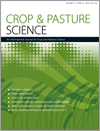CP20164Pathotype diversity of Fusarium oxysporum f. sp. mungcola causing wilt on mungbean (Vigna radiata)
Fusarium wilt, caused by Fusarium oxysporum f. sp. mungcola (Fom), is an important disease of mungbean in China. Pathogenic variability of Fom isolates has been observed. This study developed a set of Fom pathotype differential hosts and identified 12 Fom pathotypes, providing important information for resistance breeding and disease control of Fusarium wilt.





